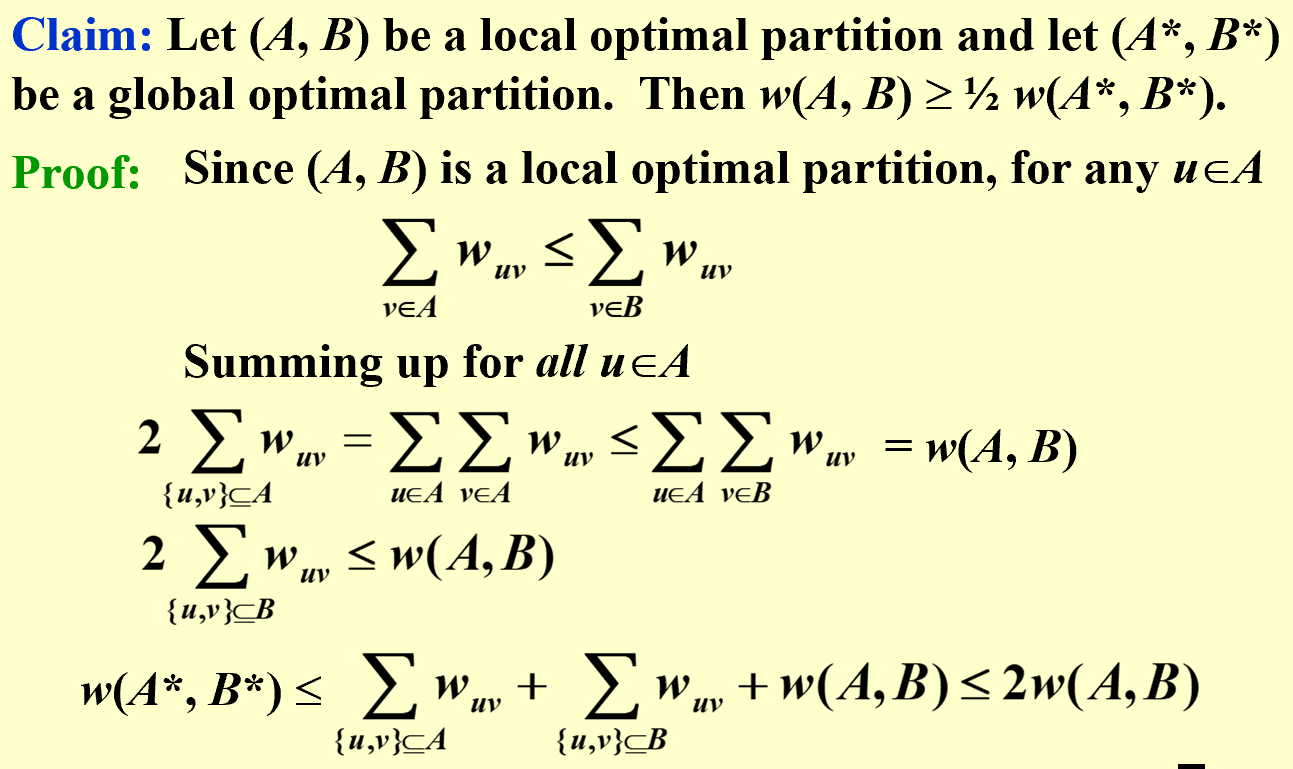Local Search (Approximation cont.)¶
约 209 个字 预计阅读时间 1 分钟
Local¶
- A feasible set of neighborhoods
- Local optimum
Search¶
- Start with feasible solution, and find a better one.
- Stop when no (or little) improvement
Vertex cover¶
- Start with all vertices
- Delete a potential vertex, which makes the remaining set also feasible
- May be add a chance to add a vertex (\(e^{-\delta_{cost}/kT}\)), \(T\) keeps cool down
Simulated Annealing¶
Hopfield Neural Networks¶
- Assign states of each node
-
Edge are constraints and reward
All edge constraints may not be satisfied, but all nodes are stable.
-
A stable node
\(\sum w(e)_{good} \geq \sum w(e_{bad})\)
-
We flip a node if it's not stable
A flip will surely increase the total gain.
Total gain has upper bound.
There always a solution that all nodes are stable.
Local search is not polynomial. It has at most \(\sum w_i\) iterations.
Maximum cut problem¶
Special case of hopfield neural networks, with positive edge weight. (only nodes belong to different group, we gain the reward)
- \(2+\epsilon\) approximation
Only flip when gain is at least \((2\epsilon/|V|) * w(A,B)\)
\((2+\epsilon)w >= w^*\)
\(O((n/\epsilon) logW)\) flips
\(f'(k) = 1/Nln(N/k) + -1/N = 1/N*(ln(N/k) - 1)\)
\(N/k = e\), \(k = N/e\)

